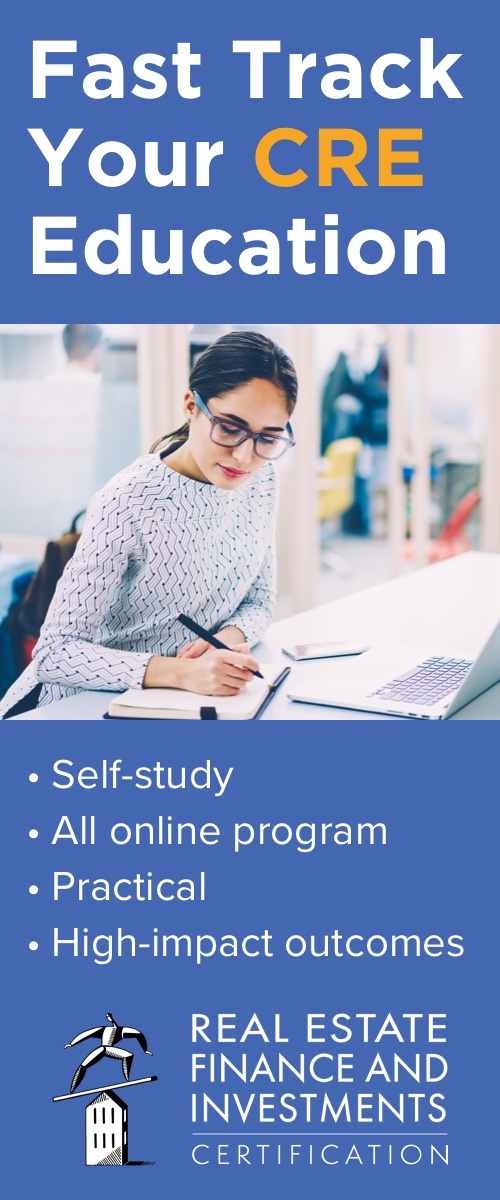Overview
Listen to this narration if you prefer
A ground lease is a special case when the owner of a building does not have a fee simple interest in the land. Rather, the building owner leases the land from a third party landowner. A ground lease is similar to a mortgage, as both have fixed payment streams that have priority over equity claimants, and failure to pay causes a contractual default that triggers specific remedies.
Summary
Ground leases generally specify that the landowner (the lessor) receives any structures remaining on the land at the end of the lease. That is why ground leases typically have very long terms (e.g., 99 years). Ground leases tend to be renegotiated every 10-20 years, because as the expiration date approaches, the landowner may have little incentive to extend the lease.
An advantage of the ground lease structure to the building owner is the ground rent payment is tax-deductible, while owning the land provides no tax shelter via depreciation.
It is somewhat complicated to value a building that is subject to a ground lease. When doing so, the discount rate used on the ground lease payments should be lower than the discount rate for the fee simple ownership structure, as the landowner owns a priority portion of the property’s cash stream. Therefore, the landowner’s expected rental stream has much less risk than the property under a fee simple structure. Remember that you have to pay your ground lease or lose your building!
Lenders may demand that the landowner agrees to subordinate their ground lease claim to the mortgage holder. This subordination means that the landowner accepts a lower position in terms of rights to the collateral and the cash flows throughout the life of the loan. Subordinating their land means that if you default on your mortgage, the lender not only has recourse to your building but also to the landowner’s land to satisfy their mortgage claim. Such a mortgage proposal might be acceptable to both the borrower and the lender, but landowners typically have a difficult time agreeing to such provisions.
In the end, when ownership of the land and the building are split, it is hard to make everyone happy. That is why the ground lease structure is relatively rare and usually inefficient.
Questions
These are the types of questions you’ll be able to answer after studying the full chapter.
1. What is a ground lease?
2. What is one distinct advantage of a ground lease in the U.S.?
3. If properties trade at an 8% cap rate in the market and forward year NOI is $10M, what is the property worth? If the property is on a 99-year ground lease requiring payments of $2M per year, what is the building worth?
Audio Interview
Why some investors won’t touch a property with a ground lease (7:03)
BRUCE KIRSCH: We learn about ground leases. And so this is basically where you have a landowner who refuses to sell their land but they still want to monetize it. And the way they can do that is by allowing a third party to develop and operate a cash flowing asset on the land.
And so a ground lease, it seems, can satisfy all the parties in that the landowner doesn’t relinquish title and the developer and operator get the benefit of accessing the site and creating a cash flow stream.
That said, some investors– some developers– won’t touch a site with the ground lease on it with a 10 foot pole. Why is it that some people just don’t want to be involved with ground leases?
DR. PETER LINNEMAN: I think the simplest reason is KISS– keep it simple, stupid. I think a lot of investors, particularly institutional investors, say, look I have enough opportunities I can do where I can buy the land and the building.
I know I’ll never have to deal with people who are concerned about the land being owned by somebody different than the building. And there’s just, I’ve got enough other choices. I just keep it simple.
And as you say, I just don’t do it, I think is the main reason. It’s a self-creating problem, which is as soon as some people do that, it means that the liquidity for buildings that are subject to a ground lease is not generally quite as great because you’re eliminating some potential buyers. And as a result, reducing the liquidity to some degree.
Since the liquidity is reduced there’s another group of buyers that say, well, ground lease buildings are not as liquid. And I really want liquidity, therefore I’m not going to do it. I’m not going to buy such buildings. Which further reduces the liquidity, which has a bit of a reinforcing effect on what we’re talking about here.
The truth is it’s just a contractual obligation on the property. It requires some additional financial analysis. It requires a bit of discipline in your thinking.
Namely, you’ve given away the safest cash streams to the building to the ground owner. Generally they get paid first. And if anything goes wrong and you can’t pay the ground owner they not only have the ground back, they take your building.
And so you just have to think about, well, they’ve taken the safest of the safe cash streams, and what I’m left with are the riskier parts of the cash stream.
And one of the mistakes I see people make a lot is say, well, a building subject to a ground lease is selling for a seven cap, but a building not subject to a ground lease– pretty much the same kind of building– is selling at a six cap. So I’m going to buy the building at a seven cap because it’s a bargain.
You go, wait. It’s not a bargain. You’ve already given away on that building the safe part of the income stream. That’s why the cap rate is higher. Somebody else owns the ground part of the cash flow, and that’s the safest part of the cash flow.
And you can think of the building and ground being a weighted average of the return required on the safe part and the return required on the less safe part. So you can get a lot of sloppy thinking.
Dealing with ground leases just requires a bit more discipline in you’re thinking about what you own, what its risk is, and what the returns have to be to make it worthwhile.
BRUCE KIRSCH: Do some lenders feel the same way that some developers and investors feel because there is this additional element of complexity?
DR. PETER LINNEMAN: Yes, but for a lender it’s even more complex. Because if you think about what lending is about on a building where you own the ground and the building is, the lender takes the safest income.
They make their loan and they say, all the cash flow comes to me first. And if you can’t pay me then I take the property to make me whole.
What complicates it for a lender when they face a ground lease is somebody owns the ground who has a contract that says, no, I get paid first. And I get to get the property first if anything goes wrong.
So one of the challenges of getting a loan on a ground lease building is the lender and the ground owner have to come to an agreement about who comes first. Who gets the safest of the safe payments. And that can be difficult.
I’m a ground owner in a couple of properties and I basically refuse to subordinate my ground to somebody else’s loan. That is, the fact that you want to get a loan is your business. My ground is my ground. I kept it as an investor because I wanted the really safe cash stream.
And I understand why you’re going to want me to give it up and take a less safe position after the loan. But that’s not why I own the ground lease.
Normally people who own the ground lease want a very safe income stream. And when you say yes, subordinate your ground position to a 60% loan.
Imagine land– I’m just being arbitrary– represents 20% of the value of the property, building and land combined. Well, when I own the ground and I’m not subordinated to a loan I own the safest 20%.
Now if you go out and get a 60% loan and it comes before my ground position, instead of earning the safest 20 I own the 20 that goes from 60% to 80%.
And a lot of ground owners say, that’s not the deal I signed in for. I don’t want to be a kind of a mezzanine provider, which you are suddenly if you’re providing the 60% to 80% position behind a first mortgage.
I want to be the primest of prime. That’s why I own the ground. And that makes it very complicated for a lender, because the lender normally– a first mortgage lender– wants the 0% to 60% safety position.
Excel Figures
Key Terms
To view the definition, click or press on the term. Repeat to hide the definition.
The outright purchase of both a building and the land on which it sits.
An agreement in which one is permitted to own a building on a separate landowner’s parcel for a finite lease period, at the end of which all improvements on the land become the property of the landowner.
Chapter Headings
- Valuation of an Operating Asset Subject to Ground Lease
- Method #1: Ground Lease Payment DCF
- Method #2: Ground Lease Payment Capitalization
- Method #3: Building Net Operating Income DCF
- Method #4: Building NOI Capitalization
- Financing of a Property Subject to a Ground Lease
Learn about REFAI Certification
< Ch 16 | Sources of Long- and Short-Term Debt
Ch 18 | Real Estate Owner Exit Strategies >
Table of Contents
Index
Buy the Book





